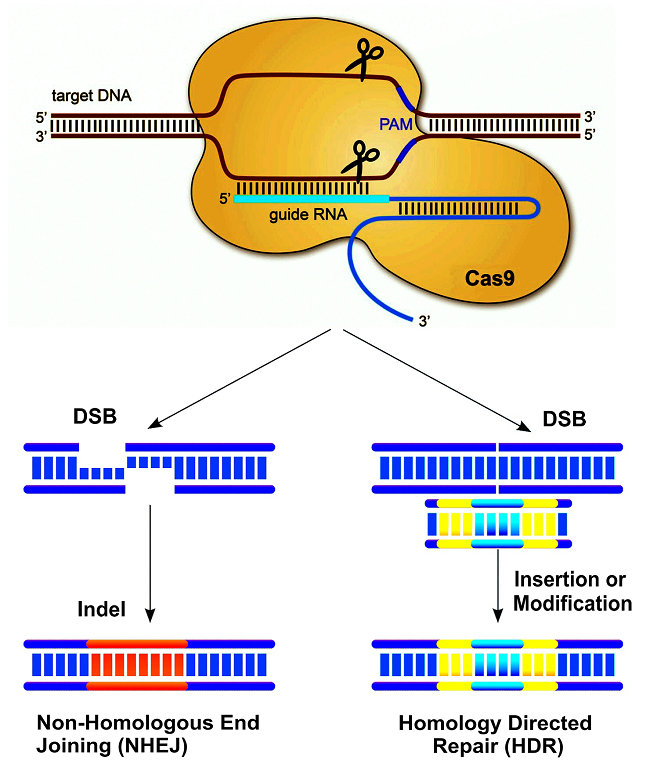 |
|
|
| Home -> Support -> Applications -> Site Specific Recombination -> CRISPR-Cas9 Recombination | ||
| Quick Inquiry |
CRISPR-Cas9 Recombination CRISPR (clustered regularly interspaced short palindromic repeats)/Cas9 system is a powerful genome editing tool allowing for site-specific genomic targeting. The CRISPR/Cas9 system uses the crRNA (CRISPR RNA):tracrRNA (trans-activating crRNA)-guided Cas9 nuclease to recognize and cleave specific double-stranded DNA (dsDNA) bearing a PAM (protospacer-adjacent motif) and an adjacent sequence complementary to the crRNA. Cas9 is a dual RNA-guided DNA endonuclease enzyme associated with the CRISPR.
The most widely used CRISPR endonuclease is Streptococcus pyogenes Cas9 (SpCas9).
However, the large size (~4 kb), the restricted PAM sequence and unwanted off-target effects of SpCas9 are major limitations that hinder its applications.
To overcome these limitations, several Cas9 variants with small size / alternative PAMs / high-fidelity, have been developed. For example, The combination of crRNA and tracrRNA is also called guide RNA (gRNA). crRNA is a ~20 nt sequence that is complementary to the target DNA, and tracr RNA is a ~70 nt sequence which serves as a binding scaffold for the Cas9 nuclease. PAM is a 2~6-base pair DNA sequence that is not present in the crRNA sequence but needs to be directly downstream of the target sequence in the genomic DNA, on the non-target strand. PAM varies depending on the Cas9 type, for example, SpCas9 recognizes a PAM sequence of NGG. The Cas9-induced double strand breaks (DSBs) are repaired via non-homologous end joining (NHEJ) or homology directed repair (HDR). Repair via the NHEJ is error-prone resulting in the creation of insertions and deletions (INDELs) at the site of the DSB and thus disrupt gene function. The HDR pathway requires the presence of a donor template allowing insertion of a specific DNA sequence.  The CRISPR/Cas9 system has a wide variety of applications and can be used to generate gene knockouts, gene knockins, point mutations, activation / repression of target genes and epigenetic modifications etc. RGBiotech offers a series of plasmids that can be used in CRISPR/Cas9 based recombination. We also provide custom construction services to meet the different demands of our customers. |
|
|
Products & Services Resources | ||
|
Home Products & Services Support About Us Contact Us |
Promotions Flyers Brochures Publications News & Events |
Terms & Conditions Privacy Disclaimers |
Contact Us EMAIL: admin@rgbiotech.com |
||
| © RGBiotech All Rights Reserved. | |||||
